#Health Benefits of Rice
Explore tagged Tumblr posts
Text
youtube
In this eye-opening video, we embark on a journey to uncover the diverse nutritional benefits concealed within various types of rice. Backed by thorough research and expert insights, prepare to be astonished as we reveal why rice is not just a culinary delight but also a nutritional powerhouse
#rice#health benefits of rice#healthy food#healthy eating#nutrition#health and wellness#red rice#black rice#white red#Youtube
0 notes
Text
6: Surprising Nutritional Value and Health Benefits of Rice
Introduction: Rice, a flexible and broadly consumed grain, has been a dietary staple for quite a while in many regions of the planet. From its modest beginnings in Asia to today’s worldwide prominence, rice plays had a huge impact on societies, economies, and cooking styles. In this blog, we will dive into the entrancing history of rice, investigate its health benefits and medical advantages,…

View On WordPress
#Brown Rice vs. White Rice#Health Benefits of Rice#Nutritional Value of Rice#RICE#Rice for glass skin whitening
0 notes
Text
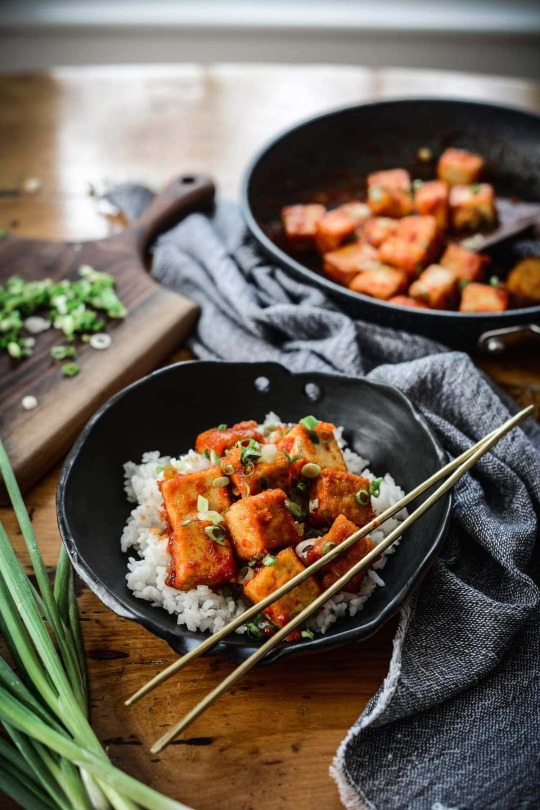
Sweet Chili Tofu
#govegan#go vegan#whatveganseat#what vegans eat#dinner#lunch#savoury#tofu#rice#fareisle#asian#asian food#asian recipes#glutenfree#gluten free#Chinese food#chinese#nutrition#health is wealth#fitspo#fitspiration#fitblr#healthy weight loss#diet#weightloss#weight loss#workout#healthy#health benefits#gym
45 notes
·
View notes
Text
What Makes Kimchi and Kimchi Ramen So Fascinating?
Introduction
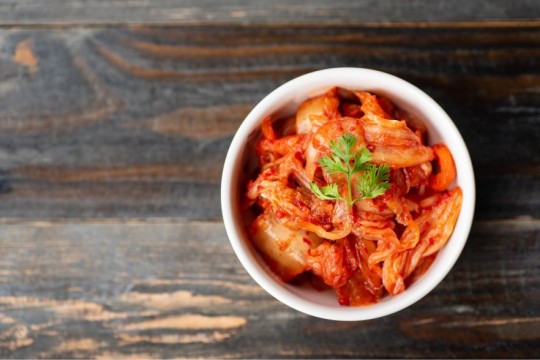
One standout creation is Spicy Kimchi Ramen, which combines the bold flavors of kimchi with the comforting essence of ramen, creating a unique and unforgettable meal. The surge in popularity of this dish reflects a broader global fascination with Korean food. In this blog, we’ll delve into the history of kimchi, explore the traditional kimchi recipe, and highlight the rise of Kimchi Ramen, along with other mouth-watering dishes that incorporate this ancient delicacy.
The Origins of Kimchi: A 2,000-Year Journey

One of the most celebrated traditions surrounding kimchi is "Kimjang," where families prepare large batches of kimchi during the cold months to ensure a year-round supply. This practice was key in preserving the traditional kimchi recipe, which has been passed down through generations. From its humble beginnings as a pickled side dish, kimchi has grown into a vital symbol of Korean culinary heritage and identity.
Kimchi in Modern Culture
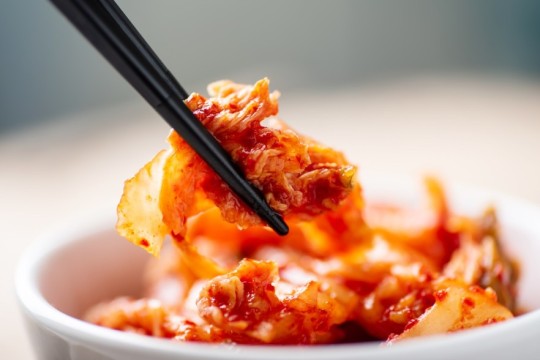
Kimchi has become a symbol of Korean pride and is one of the key reasons behind Korea's recognition as a nation of bold, flavorful food. From breakfast to dinner, kimchi is served with nearly every meal in Korea. Globally, it has gained a reputation as a superfood, celebrated for its probiotic and antioxidant properties. As more people embrace healthy, fermented foods, kimchi’s presence in the global culinary scene continues to grow, finding its way into restaurants, food trucks, and even fine dining menus.
The popularity of kimchi has also led to the rise of various fusion dishes like Kimchi Ramen Bowls, which combine traditional flavors with modern appeal. With the growing demand for convenient options, many people are looking to buy kimchi ramen online or explore instant kimchi ramen for a quick and flavorful meal at home. For those searching for the best kimchi ramen to buy, this dish has become an essential part of the global food market, making it more accessible than ever.
The Rise of Kimchi Ramen: A Global Trend
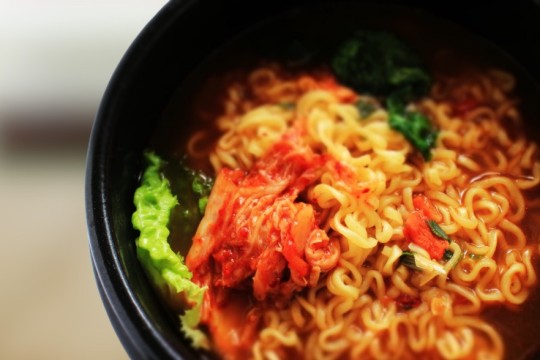
Kimchi Ramen blends traditional Korean flavors with the convenience and global appeal of ramen. While ramen originated in Japan, Korean variations have flourished, and Kimchi Ramen has become a favorite for its rich, spicy broth. The tangy kimchi adds depth, and the spice brings heat, creating an unforgettable fusion of textures and flavors.
For those curious about this popular dish, knowing how to make kimchi is essential, as the preparation of this ingredient plays a key role in the flavor profile of the ramen. Additionally, the fermented kimchi benefits contribute to its growing popularity, highlighting its health advantages.
Kimchi Ramen is now widely available in various formats, from Korean restaurants and street food markets to instant kimchi ramen that can be enjoyed at home. The trend of Kimchi Ramen has exploded, with many seeking the best options available. Whether you’re looking to find kimchi ramen for sale or explore the kimchi ramen price, this dish appeals to foodies eager for bold flavors and a taste of Korean culture.
Dishes Related to Kimchi
Kimchi’s versatility allows it to be incorporated into a variety of dishes, adding its distinctive flavor to both traditional and modern cuisines. Here are a few popular dishes that revolve around this iconic ingredient:
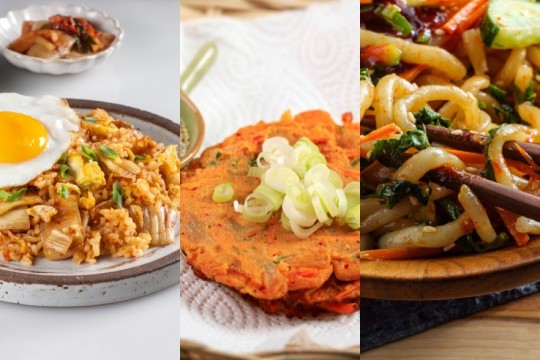
Kimchi Jjigae (Kimchi Stew)
A hot and comforting stew made with authentic Korean kimchi, tofu, pork, or other proteins. Often served in a bubbling pot, the fermented kimchi adds depth and heat, making it perfect for cold weather.
Kimchi Bokkeumbap (Kimchi Fried Rice)
This quick and flavorful dish combines leftover rice with stir-fried kimchi. It’s often topped with a fried egg and can include other ingredients like vegetables, meat, or seafood. For those interested in preparing this at home, easy kimchi at home can enhance the flavors of this classic dish.
Kimchi Pancakes (Kimchijeon)
A savory pancake made from kimchi, flour, and other ingredients like scallions and seafood. These crispy, spicy pancakes are a popular snack or appetizer in Korea. You can use the best kimchi in India to bring an authentic taste to your pancakes.
Kimchi Udon
A Japanese-Korean fusion dish featuring thick udon noodles paired with spicy kimchi broth. This creates a satisfying and hearty meal that highlights the unique flavors of kimchi.
Kimchi Grilled Cheese
A modern twist on the classic grilled cheese sandwich, incorporating kimchi for an added layer of flavor and spice. The tangy kimchi cuts through the richness of the cheese, making it a perfect comfort food.
Kimchi Tacos
A fusion dish that has gained popularity in street food culture, where kimchi is paired with taco fillings like beef, pork, or tofu for a fresh, zesty kick.
For those who love kimchi ramen, consider ordering kimchi ramen online or exploring where to buy kimchi ramen to enjoy these dishes at home.
The Impact of Kimchi and Kimchi Ramen on Modern Culture

Kimchi has not only found its way into kitchens worldwide but has also made a significant impact on pop culture. Korean dramas, K-pop, and Korean food trends have reshaped global cuisine, with Kimchi Ramen emerging as a trendy, Instagram-worthy dish. Foodies and influencers frequently highlight kimchi-based dishes in their culinary adventures, further fueling its popularity.
For a taste of authentic Korean flavor in a convenient format, try Wang Ramen Korean Style Instant Noodles. Known for its rich, spicy broth and satisfying texture, this instant noodle packet offers the perfect solution for a quick meal that doesn’t compromise on quality. Whether you’re craving a late-night snack or a hearty lunch, Wang Ramen delivers the bold flavors of traditional Korean cuisine right to your bowl. You can easily find Wang Ramen on popular platforms like Amazon and Flipkart, or visit our online store to purchase directly. Enjoy the convenience of Korean street food from the comfort of your home with Wang Ramen!
Whether you’re looking for kimchi ramen near me, the best kimchi in India, or exploring options like vegan kimchi and instant kimchi ramen, the influence of kimchi on modern cuisine is undeniable, highlighting its role in both global food trends and personal health.
How to Make Kimchi
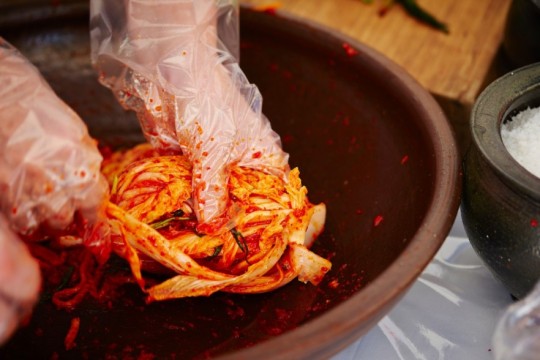
Making kimchi at home is a rewarding process that allows you to enjoy this spicy Korean kimchi at its freshest. To start, you'll need napa cabbage, radishes, garlic, ginger, and a mix of spices, including Korean chili flakes (gochugaru).
Prepare the Cabbage: Slice the napa cabbage and soak it in a saltwater solution to soften and draw out moisture.
Make the Spice Paste: Blend garlic, ginger, and gochugaru to create a spicy paste. You can adjust the spice level according to your preference for a more or less intense flavor.
Mix Ingredients: Combine the spice paste with chopped radishes, green onions, and any additional vegetables you like.
Pack and Ferment: Pack the mixture tightly into a jar, ensuring it’s submerged in its juices. It is to ferment at room temperature for several days before placing it in the refrigerator.
Kimchi is not just a tasty addition to meals; it also offers benefits like kimchi for gut health, thanks to its probiotic properties. It's a versatile ingredient that pairs well with many kimchi side dishes.
For those curious about the differences between fermented foods, kimchi vs sauerkraut shows that while both are fermented vegetables, kimchi’s distinctive spices and ingredients set it apart. Enjoy making your kimchi and savoring its unique flavors and health benefits!
Conclusion
Kimchi and Kimchi Ramen have made a lasting impact on global food culture, celebrated for their bold flavors and health benefits. From their ancient roots in Korea to their modern adaptations worldwide, these dishes showcase the versatility and richness of Korean cuisine. Whether you're enjoying a bowl of spicy Korean kimchi ramen at a street food cafe or preparing kimchi Ramen at home, these dishes offer a delicious taste of Korea’s culinary history.
The popularity of kimchi for gut health has further fueled interest in these traditional foods, blending both indulgence and wellness. As you explore the world of Korean cuisine, you may find yourself comparing kimchi vs sauerkraut, discovering the unique qualities that make kimchi stand out. For those seeking to experience these flavors, options to order kimchi ramen online or find kimchi ramen near me make it easier than ever to enjoy authentic Korean dishes. Embrace the rich, spicy flavors and the health benefits that come with them, and savor every bite of these global culinary treasures.
#Kimchi Ramen#Spicy Kimchi#Korean Cuisine#Kimchi History#Kimchi Benefits#Korean Food Trends#Kimchi Recipes#Kimchi in Modern Culture#Kimchi Stew#Kimchi Fried Rice#Kimchi Pancakes#Kimchi Udon#Kimchi Grilled Cheese#Kimchi Tacos#Kimchi Health Benefits#Korean Street Food#Korean Cafes#Vegan Kimchi#Instant Kimchi Ramen#Korean Food Culture#Kimchi vs Sauerkraut#Korean Street Food Cafe#Kimchi Ramen Online
3 notes
·
View notes
Text
I've officially signed up for health care through work.
#my job sucks but i force myself through it because health benefits are pretty good#come january ill be able to go to the dentist for the first time in a decade#and get a proper eye exam#and make a psych appointment and maybe see a dermatologist#all my eye exams in like 15 years hav#e been at the americas best and they suck last time the guy was super rude#you know riced snack cakes. if they arefrom my place of work do not eat them. they are expensive and low quality#i dont remember the way you can tell its my work just guess
2 notes
·
View notes
Text
#millets vs rice nutrition#millet#millets#millet benefits#millet nutrition#nutrition values of millets#nutrition#barnyard millet nutrition#nutritional value of millet#nutritions#millets vs rice#indian millets#millets health benefits#indian millets benefits#millet recipes#how to cook millet rice#millet health benefits#nutrition facts#millets for diabetes#indian millets types#nutritional properties of millets#millet diet
0 notes
Text
Why Health Experts Recommend the Best Indian Cooking Oil for Daily Use
Choosing the right cooking oil is a critical decision for maintaining a healthy lifestyle. With an array of options available, it can be overwhelming to select one that balances taste, nutrition, and health benefits. Health experts often emphasize the importance of using the best Indian cooking oil, given its suitability for a variety of cooking styles and its ability to meet nutritional needs. In this article, we’ll explore why selecting the right oil is essential, the advantages of choosing the best oil for health, and the growing popularity of oils like rice bran oil, including its significant rice bran oil benefits.
The Importance of Choosing the Best Indian Cooking Oil
Indian cuisine involves diverse cooking techniques, including frying, sautéing, and tempering, which demand oils with high heat stability and rich nutritional profiles. The best Indian cooking oil not only enhances the flavor of dishes but also supports overall health. Oils rich in essential fatty acids, antioxidants, and vitamins are considered ideal for daily use.
Many traditional Indian oils, such as mustard oil, coconut oil, and groundnut oil, have been staples for centuries. Modern innovations, however, have introduced options like rice bran oil, which offers numerous health advantages. Selecting the best oil for health ensures that your body gets the necessary nutrients without compromising on taste or texture.
Why Health Experts Recommend Rice Bran Oil
Among the newer entrants in the edible oil market, rice bran oil has garnered significant attention from health experts. Extracted from the outer layer of rice, this oil is packed with nutrients that make it an excellent choice for everyday cooking. Some notable rice bran oil benefits include:
Rich in AntioxidantsRice bran oil contains oryzanol, a powerful antioxidant that helps reduce bad cholesterol levels while promoting heart health.
High Smoke PointIts high smoke point makes it suitable for Indian cooking methods that involve high heat, such as deep frying and stir-frying.
Balanced Fatty AcidsWith an optimal balance of saturated, monounsaturated, and polyunsaturated fats, rice bran oil is considered one of the best oils for health.
Improved Skin HealthThe vitamin E content in rice bran oil promotes better skin health, making it a versatile option for those seeking additional benefits.
By integrating rice bran oil into your diet, you can enjoy the rice bran oil benefits that support both cardiovascular and overall well-being.
Characteristics of the Best Oil for Health
When evaluating oils, health experts recommend considering specific attributes that make them suitable for regular use. The best Indian cooking oil should possess the following qualities:
Heart-Friendly PropertiesOils that help lower bad cholesterol levels while boosting good cholesterol are ideal for heart health.
Nutrient-Rich CompositionA good cooking oil provides essential vitamins and antioxidants that support the body’s metabolic functions.
Versatility in CookingThe best oil for health should be versatile enough to be used in a variety of cooking methods, from frying to baking.
Rice bran oil checks all these boxes, making it a preferred choice for households across India. Its unique ability to combine health benefits with culinary versatility cements its position among the best Indian cooking oil options.
Integrating the Best Indian Cooking Oil into Your Diet
Switching to the best oil for health doesn't mean sacrificing flavor or texture in your meals. In fact, incorporating oils like rice bran oil into your daily cooking can elevate your dishes while providing substantial health benefits. Here are some tips for making the transition:
Start with Blended OilsMany households prefer using blended oils that combine rice bran oil with other traditional oils to achieve a balance of taste and nutrition.
Monitor Portion SizesEven the best Indian cooking oil should be used in moderation to maintain a balanced diet.
Experiment with RecipesRice bran oil’s neutral taste makes it an excellent base for both traditional and modern recipes. From frying samosas to sautéing vegetables, it enhances the flavor profile of dishes effortlessly.
Why Rice Bran Oil Stands Out Among Indian Oils
While several options are available in the market, rice bran oil continues to gain popularity due to its unique combination of health and culinary benefits. Its ability to withstand high cooking temperatures without breaking down into harmful compounds makes it an excellent candidate for daily use. Moreover, the rice bran oil benefits extend beyond physical health, contributing to better skin and hair quality, making it a holistic choice for Indian kitchens.
Conclusion: The Healthier Choice for Every Kitchen
The quest for the best Indian cooking oil often leads to a balance between health, taste, and versatility. Oils like rice bran oil have proven to be exceptional in meeting these criteria. With its impressive array of rice bran oil benefits, this oil offers a perfect blend of nutrition and flavor, making it a top contender among the best oils for health.
By making informed choices about the cooking oil you use, you can ensure that your meals not only taste great but also contribute positively to your overall well-being. Invest in the best Indian cooking oil to support a healthy lifestyle while enjoying the rich and diverse flavors of Indian cuisine.
0 notes
Text
Rice Water for Weight Loss A Natural Remedy
In the quest for effective weight loss solutions, many individuals often overlook natural remedies that have been used for centuries. One such remedy is rice water, a simple byproduct of cooking rice. This article explores how rice water can aid in weight loss. It also covers its nutritional benefits and offers ways to incorporate it into your daily routine. Are you seeking an easy way to shed…
#diet plans#food#health#Health benefits of rice water#How to make rice water#nutrition#recipes#Rice water for hydration#rice water for weight loss#weight-loss
0 notes
Text
Healthy Diet Chart for Weight Loss: A Medically-Backed Guide
Healthy Diet Chart for Weight Loss: A Medically-Backed GuideMaintaining a healthy weight is crucial for overall well-being, reducing the risk of chronic diseases, and improving quality of life. A well-planned diet is key to effective weight loss and long-term success. This article offers a medically-backed diet chart designed to promote sustainable weight loss without compromising essential…
#anti-inflammatory diet.#balanced nutrition#brown rice#caloric deficit#complex carbohydrates#egg whites#exercise for weight loss#frequent meals#fruits and vegetables#Greek yogurt#green tea for weight loss#grilled chicken#Healthy diet#hydration#lean protein#long-term health#low-calorie snacks#low-fat milk#macronutrients#micronutrients#mindful eating#nutrient-dense foods#oats#paneer salad#physical activity#portion control#processed foods#steamed vegetables#sustainable weight loss#turmeric benefits
0 notes
Text
Health Benefits of Non-Basmati Rice

Rice is a staple food in many cultures worldwide, providing essential nutrients and energy for billions of people. While Basmati rice often steals the spotlight for its aroma and long grains, non-Basmati rice varieties have their own unique set of qualities, including numerous health benefits. Non-Basmati rice encompasses a wide range of varieties, from short-grain and medium-grain types to red, black, and brown rice. These varieties are not only versatile but also packed with nutrients that promote overall health and well-being. In this blog, we will delve into the health benefits of non-Basmati rice, emphasizing why it deserves a place in your diet.
1. Rich in Essential Nutrients
Non-Basmati rice varieties are often rich in essential nutrients, particularly in their unpolished or whole-grain forms. Brown non-Basmati rice, for instance, retains its bran and germ layers, which are packed with vitamins, minerals, and fiber. Some key nutrients found in non-Basmati rice include:
Carbohydrates: A primary source of energy for the body.
Fiber: Promotes healthy digestion and helps prevent constipation.
Vitamins B1, B3, and B6: Essential for energy production, brain function, and maintaining healthy skin and muscles.
Magnesium: Supports muscle and nerve function and helps maintain a healthy immune system.
Iron: Aids in the production of hemoglobin, which is necessary for transporting oxygen in the blood.
Non-Basmati rice varieties, especially whole-grain types like brown or red rice, are more nutrient-dense than polished white rice.
2. Supports Digestive Health
Non-Basmati rice, particularly brown and red varieties, is high in dietary fiber. Fiber is crucial for maintaining a healthy digestive system. It adds bulk to the stool, making it easier to pass through the digestive tract and reducing the risk of constipation. Additionally, fiber acts as a prebiotic, promoting the growth of beneficial gut bacteria. A healthy gut microbiome is essential for overall health, as it influences digestion, nutrient absorption, and even mental well-being.
Whole-grain non-Basmati rice also has a low glycemic index (GI), meaning it releases glucose into the bloodstream slowly. This helps prevent rapid spikes in blood sugar levels, making it a better choice for individuals with diabetes or those trying to manage their blood sugar.
3. Heart Health Benefits
Incorporating non-Basmati rice, particularly whole-grain varieties, into your diet can benefit heart health. The high fiber content in brown and red rice has been shown to help reduce cholesterol levels. Fiber binds to cholesterol in the digestive system and helps remove it from the body, preventing it from being absorbed into the bloodstream. Lower cholesterol levels are linked to a reduced risk of heart disease and stroke.
Additionally, non-Basmati rice is low in saturated fats, which can contribute to heart disease when consumed in excess. By replacing high-fat, processed foods with fiber-rich, whole-grain rice, you may lower your risk of cardiovascular issues and improve overall heart health.
4. Aids in Weight Management
Non-Basmati rice can be a valuable addition to a weight management plan. Whole-grain varieties like brown rice are more filling than refined white rice due to their higher fiber content. This means that consuming whole-grain non-Basmati rice can help you feel full for longer, reducing the likelihood of overeating or snacking on unhealthy foods between meals.
Furthermore, the complex carbohydrates in non-Basmati rice are digested more slowly, providing a steady release of energy and preventing sudden hunger pangs. This can be especially beneficial for those looking to control their calorie intake and maintain a healthy weight.
5. Supports Blood Sugar Control
Managing blood sugar levels is crucial for individuals with diabetes, and non-Basmati rice can play a role in achieving this. Brown and red non-Basmati rice varieties have a lower glycemic index compared to white rice, meaning they have a more gradual impact on blood sugar levels. This slow digestion helps prevent rapid spikes in blood glucose, which can be particularly harmful to those with type 2 diabetes.
The fiber in non-Basmati rice further aids in blood sugar control by slowing the absorption of glucose into the bloodstream. For this reason, non-Basmati rice can be a healthier option for individuals who need to manage their blood sugar levels or are at risk of developing diabetes.
6. High in Antioxidants
Some varieties of non-Basmati rice, such as red and black rice, are rich in antioxidants. These compounds help protect the body from oxidative stress, which can damage cells and contribute to aging and the development of chronic diseases. Anthocyanins, the pigments that give red and black rice their distinctive colors, are potent antioxidants with anti-inflammatory properties.
Consuming antioxidant-rich foods like non-Basmati rice can help reduce inflammation in the body, lower the risk of chronic diseases such as heart disease and cancer, and support overall health and longevity.
7. Gluten-Free and Suitable for Celiac Disease
Non-Basmati rice is naturally gluten-free, making it an excellent choice for individuals with celiac disease or gluten sensitivity. Unlike wheat-based products, non-Basmati rice does not contain gluten, a protein that can cause digestive issues and other symptoms in individuals with gluten intolerance. Rice is a versatile and safe carbohydrate source for those following a gluten-free diet, and it can be used in a variety of dishes, from pilafs to stir-fries.
8. Promotes Bone Health
Magnesium, found in significant quantities in non-Basmati rice, is essential for maintaining healthy bones. Along with calcium and vitamin D, magnesium supports bone density and helps prevent conditions like osteoporosis. Consuming magnesium-rich foods like non-Basmati rice can contribute to stronger bones and reduce the risk of fractures as you age.
Additionally, brown non-Basmati rice contains phosphorus, another important mineral for bone health. Phosphorus works in conjunction with calcium to maintain strong bones and teeth, making non-Basmati rice a beneficial addition to a bone-healthy diet.
9. Boosts Energy Levels
Carbohydrates are the body's primary source of energy, and non-Basmati rice provides a steady supply of complex carbohydrates that fuel physical and mental activity. The slow release of energy from whole-grain non-Basmati rice helps maintain consistent energy levels throughout the day, preventing the energy crashes that can occur after consuming simple sugars or refined grains.
For athletes or individuals with active lifestyles, non-Basmati rice can be a valuable source of energy that supports endurance and performance. Its balanced nutrient profile, including vitamins and minerals like iron, further aids in maintaining energy levels and preventing fatigue.
Conclusion
Non-Basmati rice is more than just a versatile ingredient in the kitchen; it is a nutritious food that offers numerous health benefits. From supporting digestive health and heart health to aiding in weight management and blood sugar control, non-Basmati rice varieties like brown, red, and black rice can contribute to overall well-being. Rich in essential nutrients, fiber, and antioxidants, non-Basmati rice is a valuable addition to any balanced diet, particularly in its whole-grain form.
Whether you're looking to improve your heart health, manage your weight, or simply enjoy a wholesome and satisfying meal, non-Basmati rice offers a range of health benefits that make it a great choice for daily consumption.
0 notes
Text
Why Brown Rice Is a Better Choice for Heart Health
When it comes to supporting heart health, the choice between brown rice and white rice may seem trivial, but this decision can have a significant impact on overall cardiovascular well-being. As we continue to learn more about the influence of diet on heart disease, one thing becomes increasingly clear: whole grains like brown rice are powerful tools in maintaining a healthy heart. In this…
#blood pressure control#brown rice benefits#cholesterol management#fiber-rich foods#healthy eating#heart health#whole grains
0 notes
Text
Rice Bran Oil Benefits: सेहत से लेकर स्किन के लिए है बेहद फायदेमंद
Rice Bran Oil Benefits: Rice Bran Oil, जिसे चावल के भूसे का तेल भी कहा जाता है, एक ऐसा तेल है जो अपने अद्वितीय गुणों और स्वास्थ्य लाभों के लिए जाना जाता है। यह तेल चावल की भूसी से प्राप्त होता है, और इसका उपयोग खाना पकाने से लेकर ब्यूटी प्रोडक्ट्स तक में होता है। आजकल, यह तेल अपनी खासियतों और स्वास्थ्य लाभों के कारण बहुत लोकप्रिय हो रहा है। Rice Bran Oil की खासियत पोषक तत्वों से भरपूर: राइस ब्रान…
#& SFA#Ayurveda And Health#Direct Selling Now (DSN)#Healthy Lifestyle News In Hindi#Lifestyle News in Hindi#MUFA#Natural wellness products#PUFA#Rice Bran Oil Benefits#Rice Bran Oil की खासियत#Rice Bran Oil के फायदे
0 notes
Text

Vegan Filipino Burger Steak
#eatfigsnotpigs#filipino#savoury#dinner#rice#lunch#asian#asian food#recipe#recipes#vegan#veganism#vegetarian#mushroom#mushrooms#beef#beef mince#mince#nutrition#diet#health#healthy#health is wealth#workout#health benefits#exercise#gym#⭐️ving#i want to ⭐️ve#ed not ed sheeran
19 notes
·
View notes
Text
How Often Should Brown Rice Be Eaten

Brown rice has several nutritional benefits because of its high fiber content, vitamins, minerals, and antioxidants. It enhances digestive health, regulates blood sugar levels, and may help prevent chronic diseases. Brown rice, unlike white rice, preserves its bran and germ layers, making it higher in fiber and minerals. It also has a low glycemic index, making it ideal for controlling blood sugar levels. Regular consumption of brown rice may lessen the risk of heart disease by reducing cholesterol levels and boosting heart health due to its magnesium concentration.
It can help with weight management by keeping you fuller for longer and delivering a steady source of energy. Brown rice can be easily included into your diet by replacing white rice in recipes or adding it to salads, soups, and sushi rolls. Rinsing, using the proper water-to-rice ratio, soaking for increased texture, cooking covered over low heat, and allowing it to stand after cooking are all necessary steps in the preparation of brown rice.
However, there are certain disadvantages to consider, such as the presence of phytic acid, which might reduce mineral absorption, and the likelihood of arsenic contamination. Soaking or fermenting rice can help alleviate these issues. Overall, brown rice is a nutrient-dense and flexible grain that may be an excellent supplement to any healthy diet.
0 notes
Text

Rice, a dietary staple for billions worldwide, boasts numerous health benefits. It is naturally gluten-free, making it suitable for those with gluten sensitivities or celiac disease.
0 notes